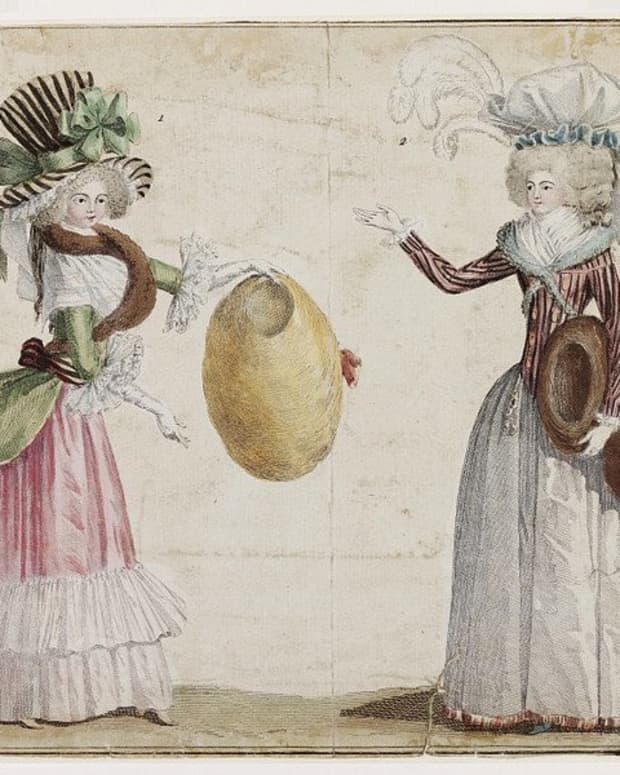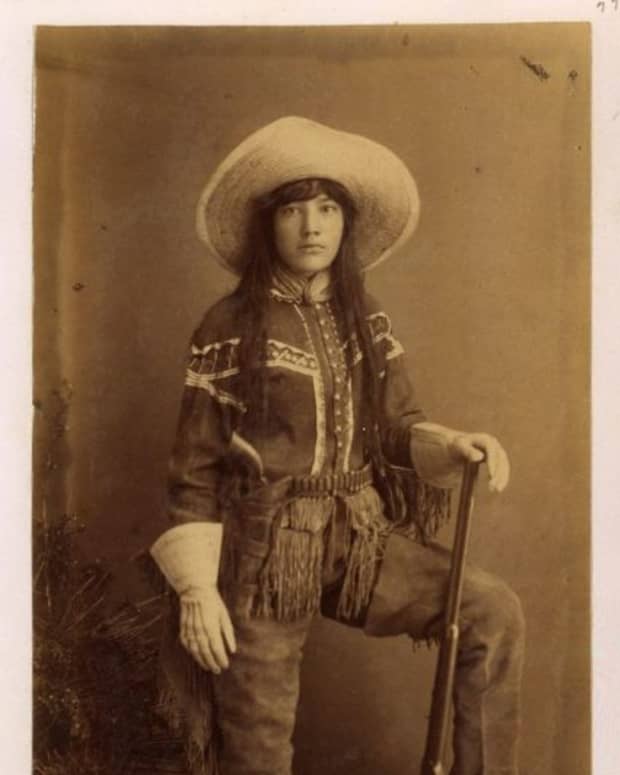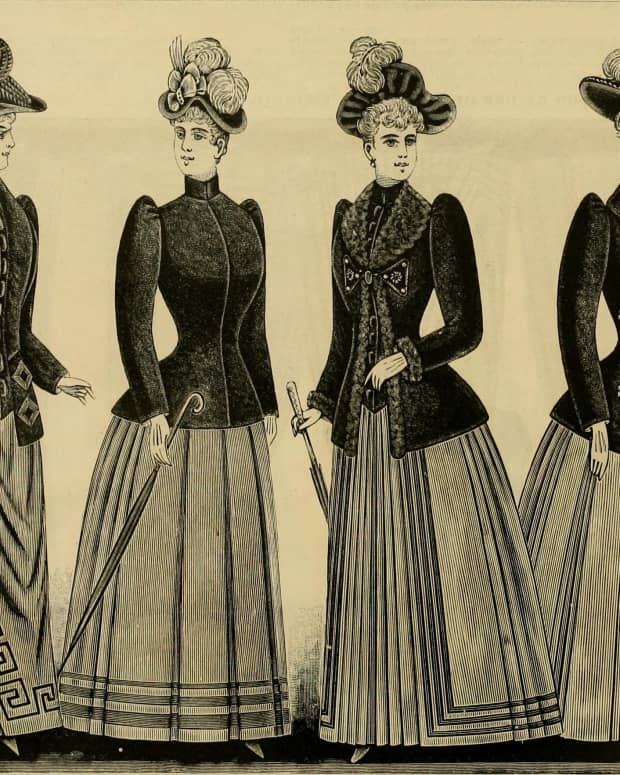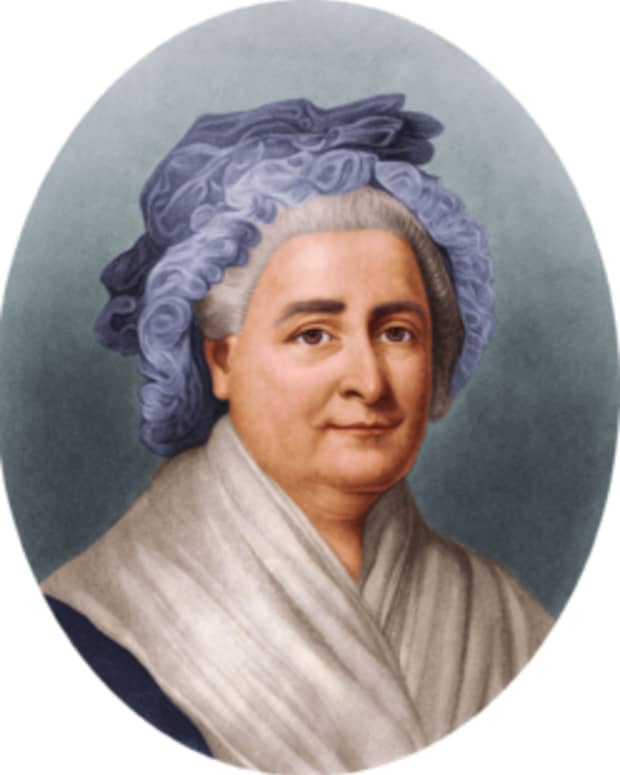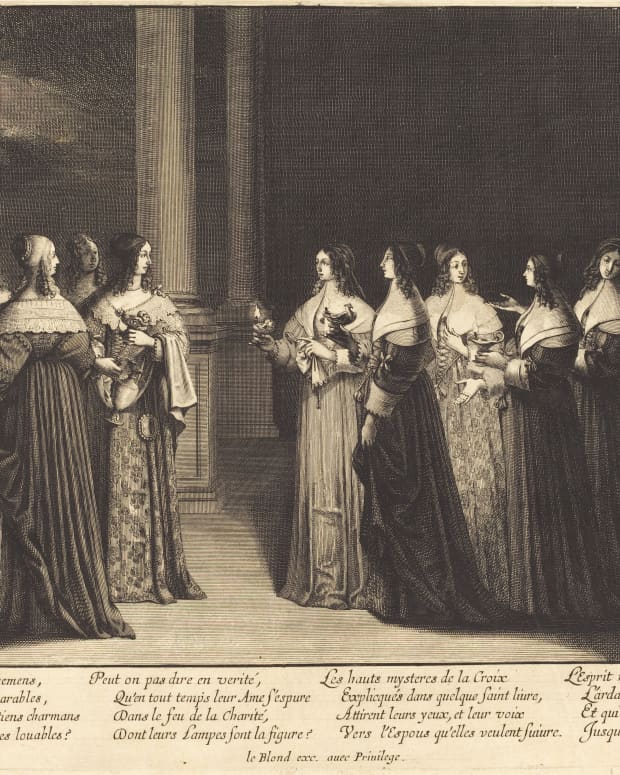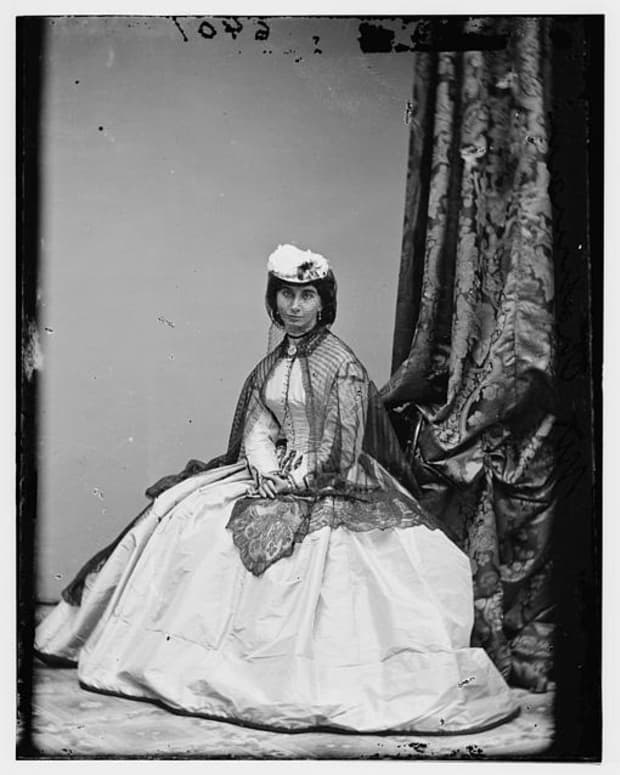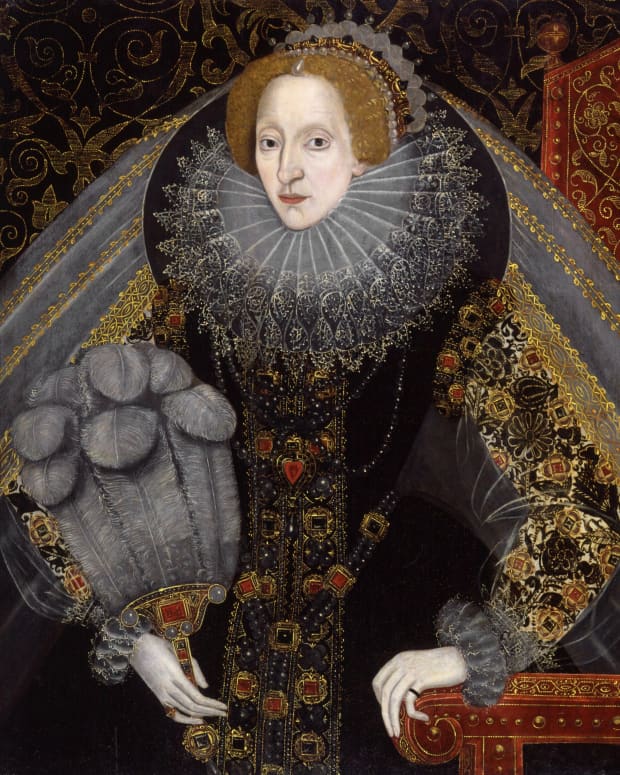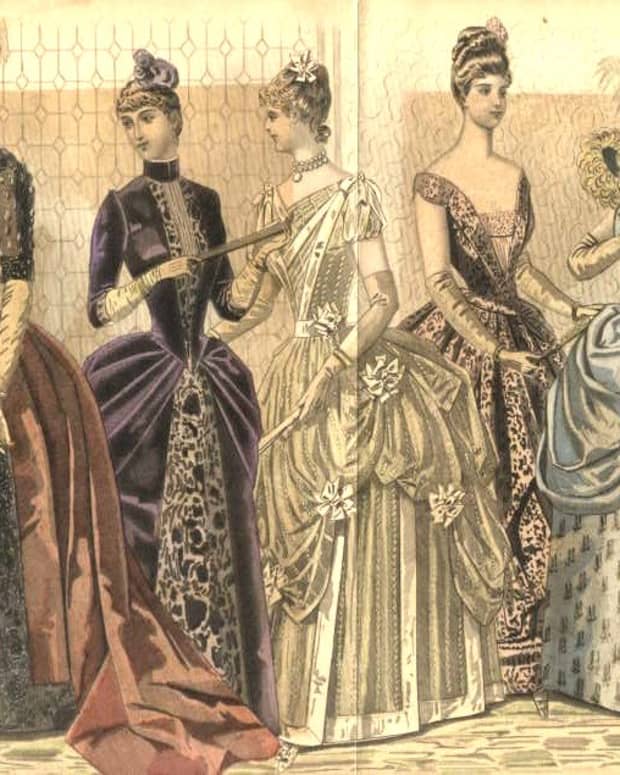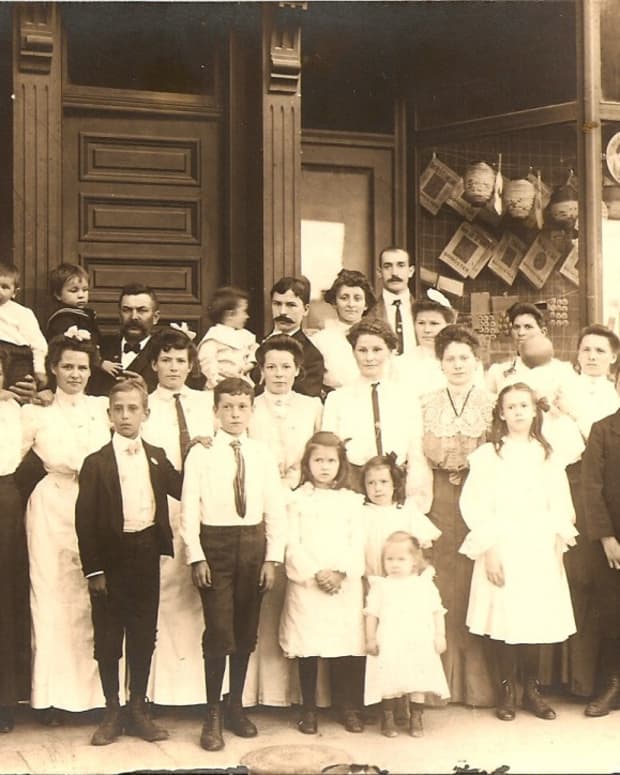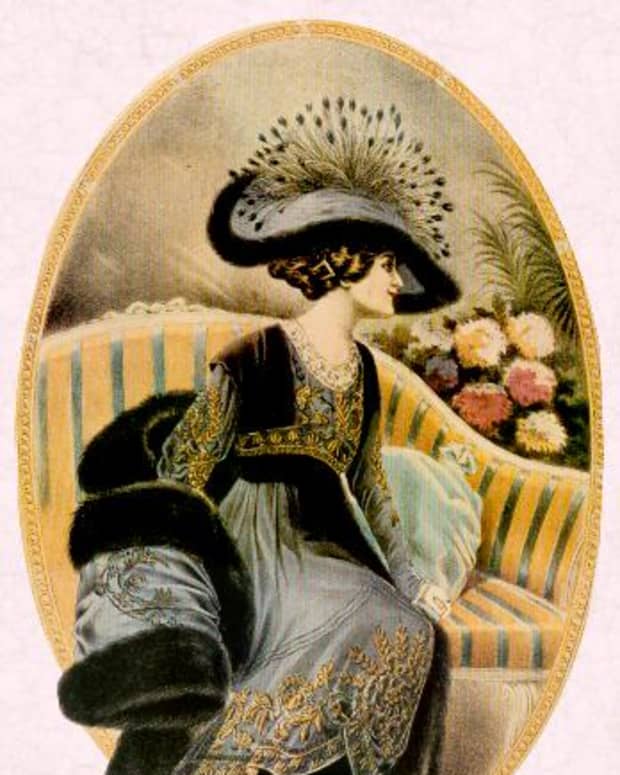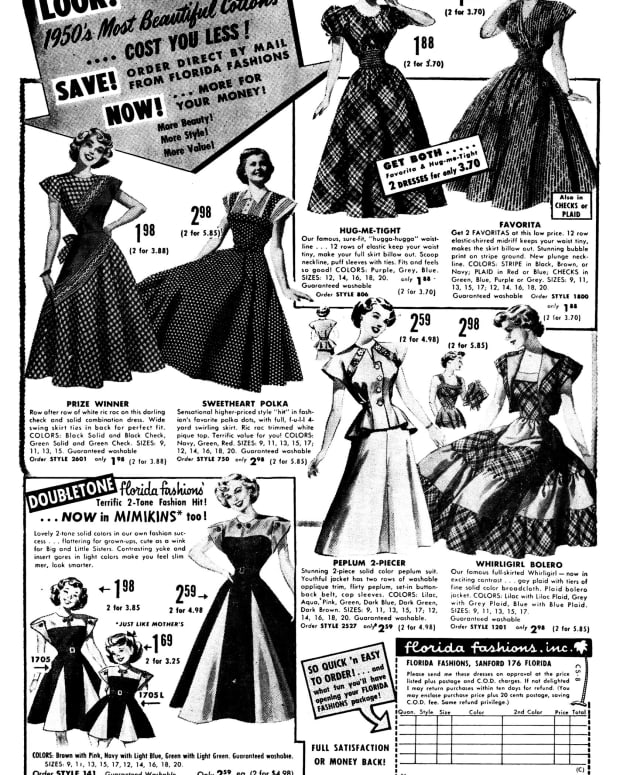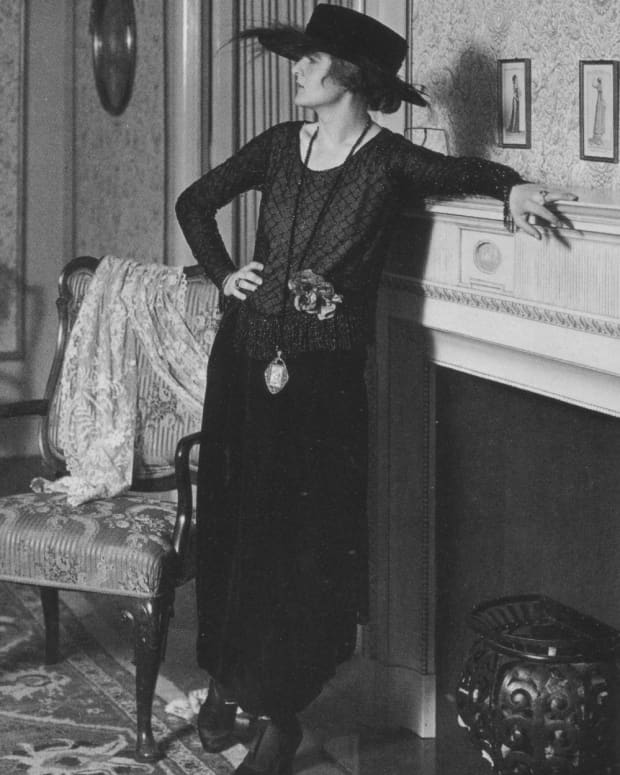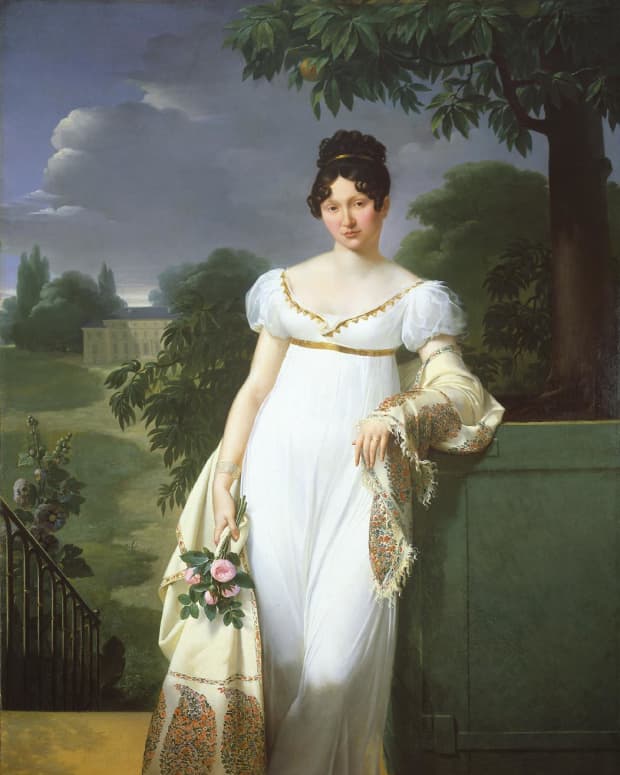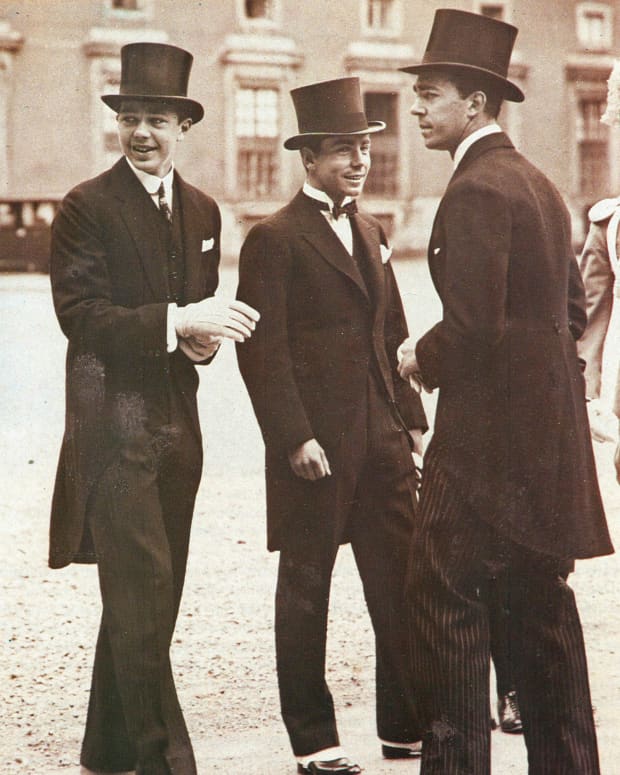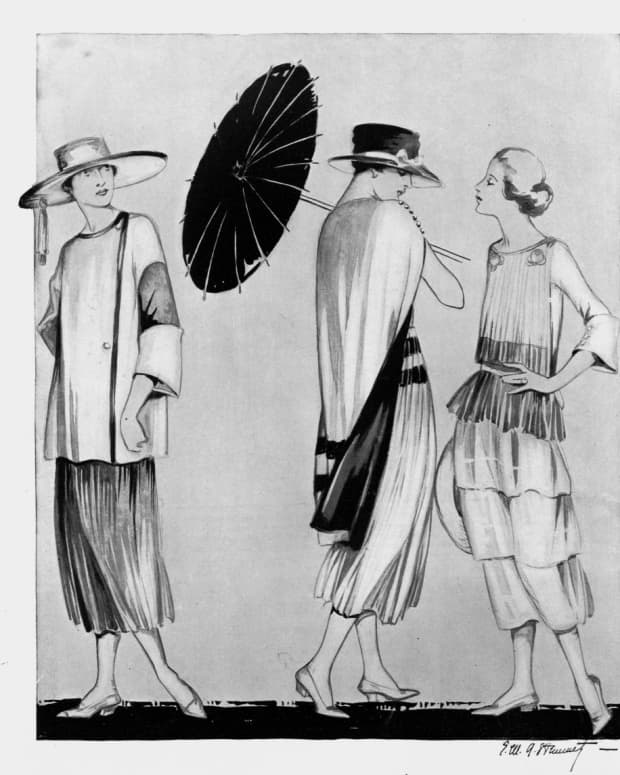Women's Hats, Caps, and Bonnets of the 1800s
Dolores's interest in fashion history dates from her teenage years when vintage apparel was widely available in thrift stores.
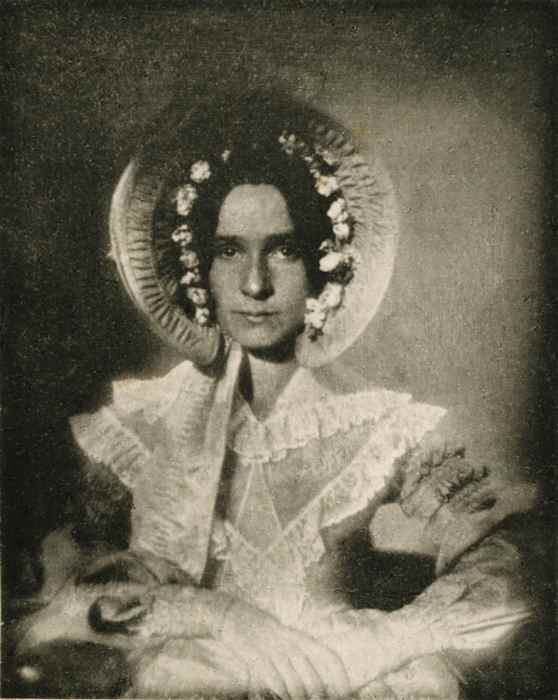
The first photograph of a woman; 1839 or 1840; Dorothy Catherine Draper wearing a bonnet decorated under the brim with pleats and flowers
Photo by John William Draper; wikimedia commons; Public Domain
Bonnet History
During the 19th century, women of Western Europe and North America always wore head coverings outdoors or in public. Women kept their hair covered due to modesty, tradition, religious beliefs, personal decoration, and protection from the elements. Bonnets were the predominant headgear for women for most of the century. In a time before sunblock or sun glasses, a bonnet's brim protected the face and neck from sunburn and protected eyes from the harsh glare of the sun.
A bonnet covers the crown of the head, features a small or large brim, and ties under the chin. Some 19th century bonnets featured a flap of fabric at the back of the neck. Bonnets were often lined and decorated under the brim as shown in the portrait at the top of this page.
A hat is worn perched on top of the head. Hats of the 1800s were kept in place with hat pins which pierced the hat and anchored the hat to the hair. Hat styles changed as hair styles changed to accommodate curls, chignons, or extensions.
Caps cover the crown of the head. In past centuries, a cap called a coif was worn indoors and outdoors topped with a hat. Day or morning caps of the 1800s were similar to a coif and worn indoors by older women. They could be very plain made of white linen or muslin or decorative with the addition of lace, eyelet, ribbons or ruffles.
Mobcaps, more widely worn in the past, continued to be worn by some working women and domestic servants. Mobcaps were easily handmade out of a round piece of cloth featuring a full crown and gathered by a band into ruffles. The caps were usually white cotton or linen and sometimes edged in lace or eyelet.

Women's hats circa 1800
Magazineof Feminine Fashion of London and Paris May 1800; wikimedia commons; PDs
The Business of Hats
Hats were handmade by milliners. Hat making was a respectable, creative, and skilled occupation in a time when jobs for women were generally limited to factory or domestic work. Milliners created hats for the elite as well as the middle class. Rose Bertin (1744 - 1813) was the first internationally known milliner who worked out of Le Grande Moghul in Paris, making hats for the nobility and upper class. Paris remained the arbiter of fashion. Wealthy women and milliners traveled to Paris to learn about the latest styles and decorative elements.
Royalty and the nobility had influenced fashions of the past. In the 19th century, a proliferation of women's magazine began to gain influence including Godey's Lady's Book (830 - 1898), Townsend's Monthly Magazine (1823 - 1888), and La Follet (1829 - 1892).
Rural women often made their own hats and bonnets using scraps from larger projects.
The Industrial Revolution increased production and lowered the cost of hats, making attractive head gear more available to lower middle class and working class women. As production increased, ready-made hat could be stored and sold to wholesalers. In the latter part of the century, department stores in large and small cities began to feature millinery departments

Poke bonnet - black silk with box pleated black silk band, ribbon, and black polka-dot tulle circa 1850 - 1820
Early 1800s
At the beginning of the century, women's fashions reflected simple, classic styles as well as an interest in a romanticized pastoral life. Rustic bonnets came in many forms and could be plain or decorated with artificial flowers. Warm weather bonnets were made of straw and featured wide brims.
Popular styles included:
- Capote bonnets had close fitted, gathered crowns with stiff brims. The brims grew to later become Poke bonnets.
- The Poke bonnet featured a small crown and large, forward brim that protected the face from sun and rain. Worn in urban and rural areas, the Poke bonnet was The Hat of the American West.
- The Calash was formed over collapsible whalebone or cane hoops and had been popular in the 18th century.
- The "Gypsy" style featured a low crown with a moderately wide brim. Ribbons were fastened over the outside of the bonnet and tied under the chin.
Hats of the Romantic Era: 1820-1850
The Romantic Period emphasized sentimentality and emotion. The fashion elite's goal was to appear pale and lethargic with garments that hampered movement. Bonnets remained the most popular headgear for urban and rural women. Enslaved women of the American South wore turban-like head wraps as well as bonnets and mobcaps. Mature women continued to wear day caps indoors.
Hats featuring large brims and high, rounded crowns were decorated with lace and large feathers. From 1835-1845 birds - of - paradise blooms were in great demand.
Bonnets grew bavolets, flaps, or ruffles that hung over the back of the neck. Fashionable women wore bonnets with attached veils which could be thrown back over the crown of the head or hung forward over the front brim.
In the 1840s, a central dip appeared in the front center of the bonnet brim, creating a heart-shaped frame for the face. Ruffles, lace, or other trim were added to the underside of the front brim.
Read More From Bellatory
Drawn bonnets were built over wire or cane. Small channels were sewn into the silk, and the fabric was drawn over the cane. Similar to the calash bonnet of earlier years, the newer version was smaller and rounder than the tall oval bonnet of the 18th century.
Women who engaged in equestrian sports wore men's style top hats for the rest of the century. A loose veil was attached. Women wore large, round straw hats with flat, low crowns and down-turned brims for the beach, garden, or country.

Circa 1865 - Woman in a small hat with big feathers
Oil painting by Gustave Courbet; wikimedia commons; PD
Hats of the Crinoline Period: 1850-1869
The Crinoline Period refers to when women's skirts grew quite huge, first with crinolines then with added hoops. While Paris remained the fashion leader, Queen Victoria was highly influential and encouraged the growth of industrial production.
Older women continued to wear day caps, now with lappets which were long extensions or ribbons hanging from the front at the sides. The bonnet still ruled. Bonnet crowns were lower and sloped toward the back with wide front brims. Lappets hung from the front of bonnets from the 1850s to the early 1860s.
Beaded hair nets called snoods were popular at this time. A loose net-like weave hung from a headband to envelop the back roll of hair.
In the 1860s, small hats perched forward. Sailor hats featured round crowns with narrow brims. During this time, women also wore bonnets tilted back with the front part of the crown built high with decorative feathers, ornamental grass, and artificial fruit or flowers. Bavolets often hung from the back.

Female equestrian wearing a top hat with a veil. Circa 1873
Carolus Duran "Equestrian Portrait of Mademoiselle Crozette, wikimedia commons; PD

Woman in a straw hat with one side of brim turned up. Circa 1880s
Gladstone Collection of African American Photographs; wikimedia commons; PD
Late Victorian Hats
The 1870s and 1800s reflected a materialistic culture that emphasized consumer consumption. Women's garments and hats reflected the over-the-top sentiment with huge bustles at the rear of dresses and lavish ornamentation. Conversely, the Aesthetic Movement and Dress Reform Movements, as well as a new interest in sports, led to a simplification of styles at the end of the century.
Hats and bonnets were worn tilted up or set forward to accommodate great piles of hair at the top and back of the head. When hairstyles simplified, hat and bonnet crowns rose.
- Brimless toques became popular.
- Garrison caps were small and jaunty, decorated with feathers.
- The Post Boy hat, set high on top of the head, featured a high crown and narrow brim.
- Boaters were the same as men's versions. Flat crowned with a medium brim and ribbon surrounding the base of the crown, boaters were made of straw.
- The Trilby was similar to a Fedora. Trilby's have a smaller brim, turned up at the back with less pronounced creasing. The style was worn by men and women, with women's styles featuring more embellishment.
In the 1880s, hats perched high with medium brims turned up on one side.
By the 1890s, day caps were no longer worn indoors. Hat sizes were small to medium, some without brims. Decorations and trim appeared higher on hats and included ribbons, lace, flowers, and feathers. Embellishments were fastened on one side of the hat and rose above the crown.
Late 1800s Feathers as Decoration and the Decimation of Wild Bird Populations
For much of the century to the early 1900s, women's hats were decorated with bird feathers and plumes. From 1875 - 1886 entire stuffed birds or wings adorned hats. The feather trade was so huge that wild bird populations were devastated by the slaughter. Birds were killed during the breeding season when plumage was most attractive, leaving nestlings to starve to death.
Conservatives spread misinformation claiming that feathers were gathered from the ground at rookeries. Others believed that wild birds were an inexhaustible resource.
Harriet Hemenway and her cousin Mina Hall encouraged women's groups to help end the slaughter of egrets, birds - of - paradise, flamingos, roseate spoonbills, kittiwakes, and great crested grebes. Along with ornithologist William Brewster, they created the Massachusetts Audubon Society in 1897 and launched a boycott that eventually led to the prohibition of wild bird feather trading in their state. In England, Emily Williamson of Manchester pushed to establish the Society for the Protection of Birds.
By 1918, the Migratory Bird Treaty ended the trade of many wild birds and prevented the extinction of the Snowy Egret, Sandhill Crane, and Wood Duck, and helped restore populations.
For Further Reading
Victorian Fashion by Jayne Shrimpton; Shire Library
Victorian Fashion : A Pictorial Archive 965 Illustrations by Carol Belanger Grafton; Dover Publications 1998
Survey of Historic Costume by Phillis G. Tortora and Keith Eubank' Fairchild Publications; 1999
"Victorian Hats," Victoriana Magazine
© 2021 Dolores Monet
Comments
Chitrangada Sharan from New Delhi, India on July 11, 2021:
Excellent and interesting information about the women’s hats and caps. I liked reading about the details provided by you, in your well researched article. How times have changed, especially with regard to womenswear.
Great article and great pictures.
Thank you for sharing.
Pamela Oglesby from Sunny Florida on July 11, 2021:
This is a very interesting article, Dolores. I liked the hats from the romantic era the best. I appreciate all of the information you provided.
Peggy Woods from Houston, Texas on July 11, 2021:
I love reading these fashion articles of yours. This one about hats and bonnets was equally informative. I am glad that they stopping killing beautiful birds merely to display their feathers on hats.
Dora Weithers from The Caribbean on July 11, 2021:
As always. I appreciate the interesting and informative facts on fashion so long ago. The hats and bonnets added elegance to the woman's appearance. Hooray to the milliners who created such exquisite styles.






